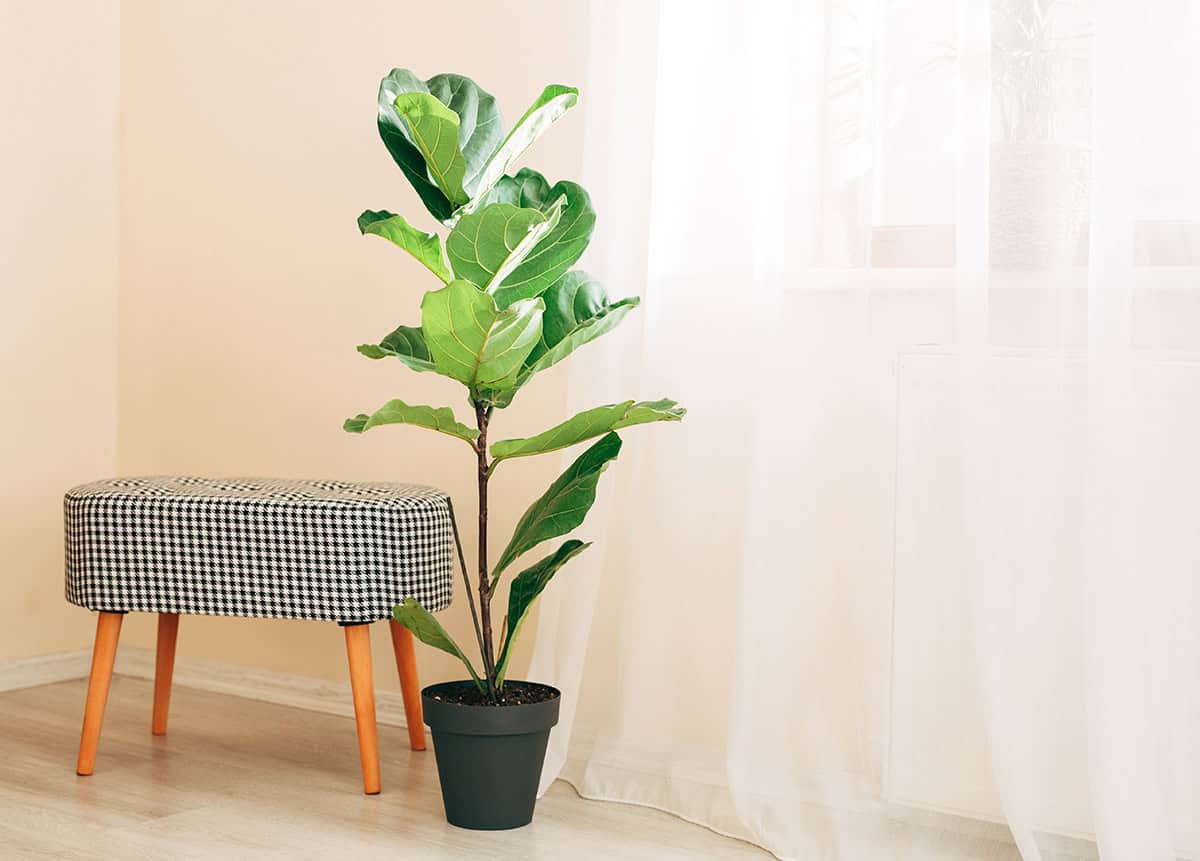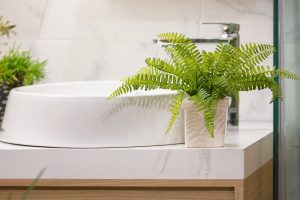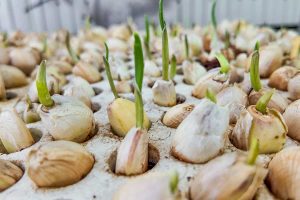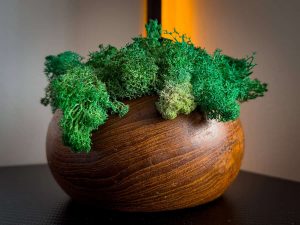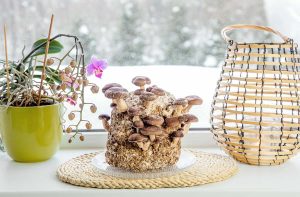A fiddle leaf fig with long stems and scattered leaves isn’t what most plant owners hope for, but it’s a fixable problem. Understanding the reasons behind legginess is the first step to a thriving, bushy tree. Let’s walk through why this happens and how to bring your plant back to its best.
Table of Contents
What Does A Leggy Fiddle Leaf Fig Look Like?
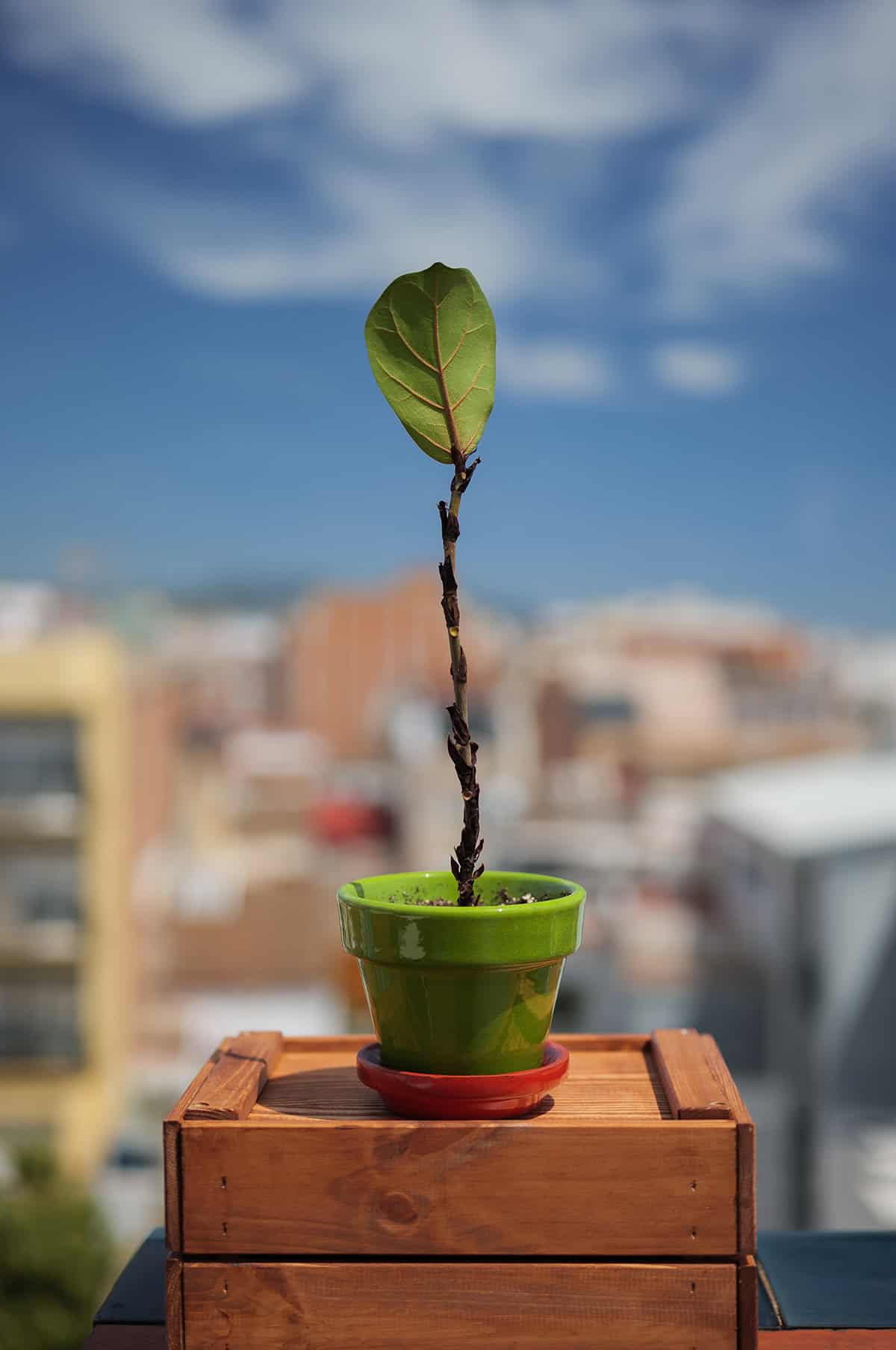
A leggy fiddle leaf fig can detract from the plant’s natural beauty. Key indicators include elongated stems with sparse leaves, which can affect the plant’s health and appearance. Addressing legginess promptly helps maintain a fuller, more robust plant.
Signs Your Plant Is Leggy
Legginess in a fiddle leaf fig is typically obvious. The plant’s stems are unusually long and thin. Leaves are spread apart, creating gaps along the stem. This results in a sparse appearance, with fewer leaves near the base. The plant may also tilt or lean as it stretches toward the nearest light source. Leggy stems can become so weak that they struggle to support the plant’s weight.
Difference Between Normal Growth and Legginess
Normal growth in fiddle leaf figs involves evenly spaced leaves along sturdy, well-defined stems. The plant should be upright with full, lush foliage. Legginess differs significantly, as it involves disproportionally stretched stems. Growth focuses more on reaching light than developing healthy leaves. This imbalance results in longer stems that lack resilience and create an uneven look. Understanding these differences helps in taking corrective steps and ensuring a healthy, vibrant plant.
Common Causes of a Leggy Fiddle Leaf Fig
A leggy fiddle leaf fig can result from several factors. Insufficient light, irregular rotation, and overcrowding contribute significantly. Stress and lack of pruning also affect the plant’s structure.
Lack of Adequate Light
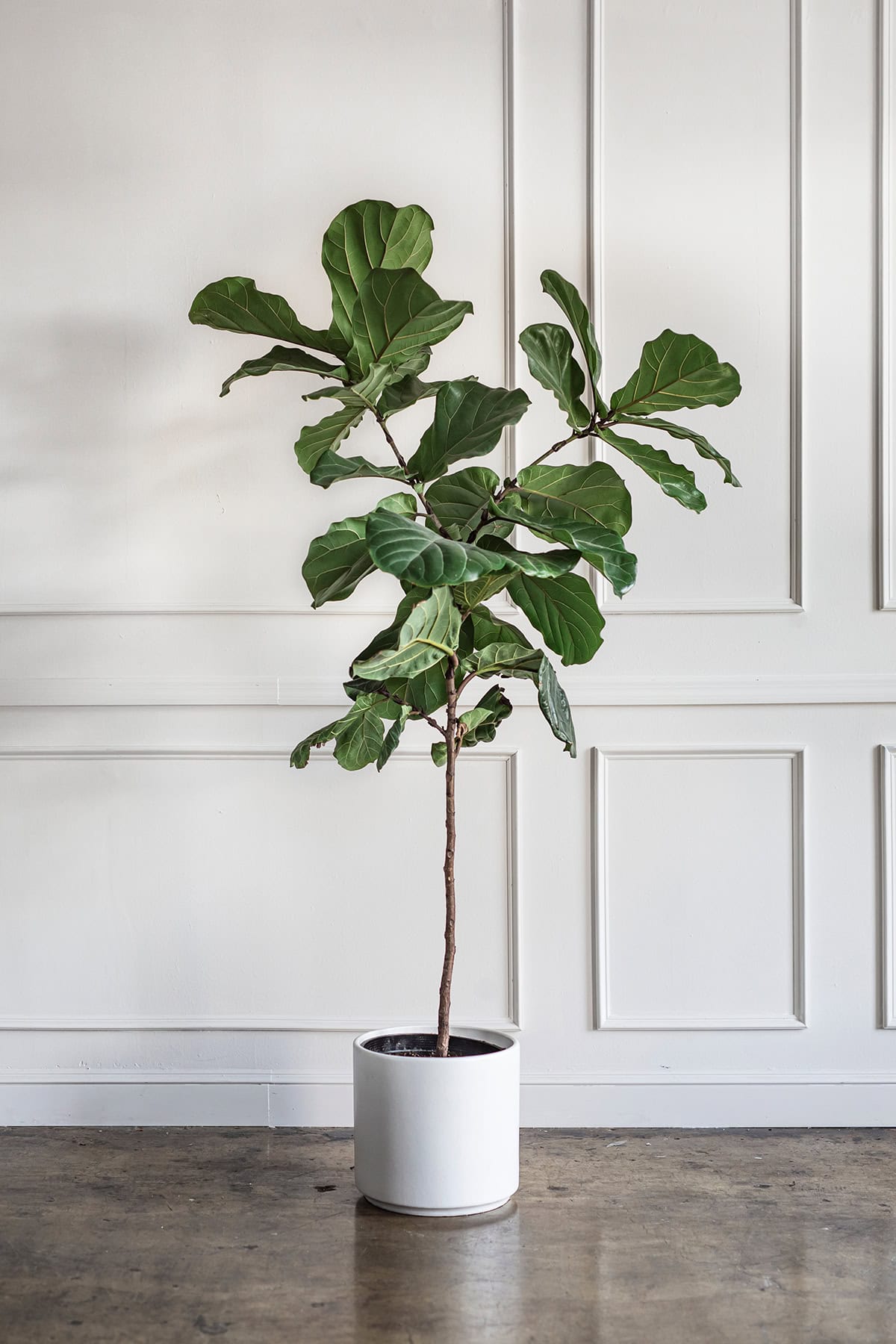
Fiddle leaf figs require bright, indirect light to thrive. If your plant doesn’t get enough light, it stretches toward the source. This creates long, spindly stems with few leaves. Place your fig near a window with filtered light. Avoid direct sunlight, which can scorch the leaves. You may need to supplement with a grow light if natural light is limited. Adjust the distance to prevent leaf burn while ensuring enough light exposure. Regularly clean the leaves to enhance light absorption.
Not Rotating the Plant Regularly
Without regular rotation, your fiddle leaf fig may lean or grow unevenly. The side facing the light receives more exposure, resulting in uneven growth. Turn your plant every couple of weeks. This ensures balanced exposure on all sides. Regular rotation encourages a more symmetrical and fuller appearance. Maintain a consistent schedule to help the plant adapt and grow evenly over time. Monitor growth patterns to adjust your rotation strategy as needed.
Overcrowding or Competing for Light
Overcrowding can prevent each part of the plant from accessing light. This is especially true if your fig is near other plants or against a wall. Ensure enough space for light penetration by providing at least a foot of clearance. Use a plant stand if necessary. Evaluate plant position regularly, preventing light blockage or leaf competition. Remove or relocate any barriers that limit light access.
Natural Growth Without Pruning

Fiddle leaf figs grow tall and leggy if not pruned. Pruning helps maintain desired shape and encourages bushier growth. Identify and remove long, unproductive branches. Use sharp, clean tools to prevent damage and disease. Focus on cutting just above leaf nodes to stimulate new growth. Regular pruning helps manage height and improves plant aesthetics. Monitoring consistently allows you to catch growth changes early.
Extended Periods of Stress or Poor Health
Stress affects your fiddle leaf fig’s growth and appearance. Inadequate water, poor soil, or pest issues can stress the plant. This leads to leggy growth. Ensure consistent watering schedules. Use nutrient-rich soil and monitor for bugs. Address any signs of poor health promptly. Keep a stable environment with minimal extremes in light, temperature, or humidity. Regularly check the plant for any signs of distress.
Can a Leggy Fiddle Leaf Fig Be Fixed?
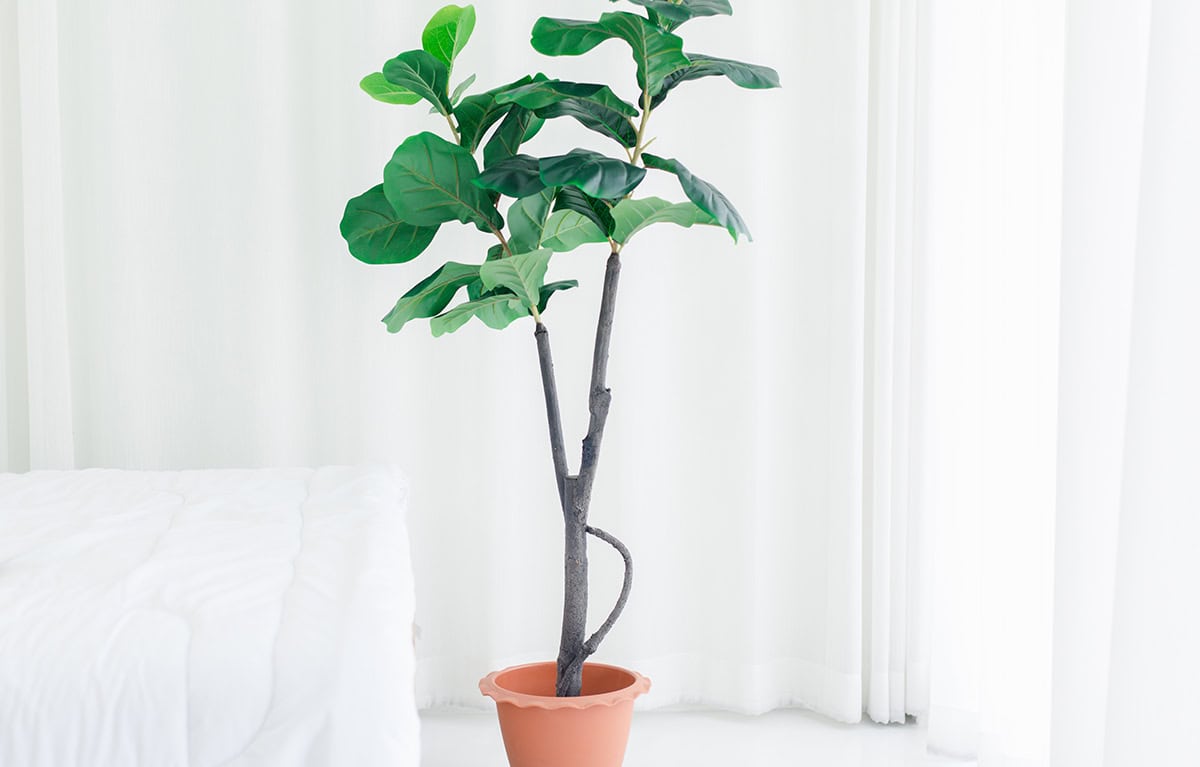
A leggy fiddle leaf fig often suffers from inadequate light, poor pruning, or improper care. Identifying these conditions early helps you decide when intervention is necessary.
When to Intervene
Fixing a leggy fiddle leaf fig typically involves adjusting light exposure and pruning. You must ensure that your plant receives bright, indirect sunlight. Move it closer to a window or consider supplemental lighting. Pruning is another effective method. Trim back the stems to encourage bushier growth. When cutting, ensure each cut is clean to prevent disease. Roots sometimes outgrow their container, needing a pot upgrade. Wait until the soil is dry before watering again.
Providing the right nutrients can also make a difference. Choose a balanced fertilizer designed for indoor plants. Apply during the growing season to support new growth. Monitoring temperature and humidity levels aids in maintaining plant health. Consistent conditions are important for recovery.
When It’s Normal and When It’s Not
A fiddle leaf fig can naturally shed some lower leaves or become leggy. It’s normal if the plant is healthy elsewhere. Observe the growth pattern for signs of distress. Insufficient light is a common reason for legginess. New shoots may grow far apart without adequate light.
In contrast, symptoms like frequent leaf drop and yellowing could indicate deeper issues. Pest infestations or root problems can exacerbate legginess. Routine checks for pests and diseases prevent further complications. A healthy fiddle leaf fig develops robust, dark green leaves. If you notice significant deviation from this, it could be time to intervene.
What To Do If Your Fiddle Leaf Fig Is Leggy

A leggy Fiddle Leaf Fig often lacks adequate light and may need extra care to promote fuller growth. Consider increasing light exposure, strategic pruning, and proper fertilization to help it thrive.
Move It to a Brighter Spot
If your Fiddle Leaf Fig looks leggy, move it closer to a window with bright, indirect light. These conditions mimic its natural environment. A south-facing window is ideal, but avoid direct sunlight, which can scorch the leaves. Keep the plant away from drafts or vents. Light is crucial for photosynthesis, which helps thicken the plant’s structure.
Rotate the Plant Regularly for Even Growth
To prevent your Fiddle Leaf Fig from growing unevenly, rotate it every couple of weeks. This ensures all sides receive light exposure, encouraging symmetrical growth. Without rotation, the plant might strain toward a single light source, leading to uneven and leggy development. Consistent rotation is a simple way to maintain balance and promote a fuller appearance.
Prune Strategically to Encourage Fuller Growth
Pruning can help your fig become more lush. Cut back long, spindly stems about an inch above a leaf node. This prompts the plant to grow new branches, making it appear fuller. Prune during the growing season for best results. Use clean, sharp shears to prevent disease. Avoid over-pruning, as this stresses the plant.
Pinch New Growth to Promote Branching
Pinching the tips of new growth can stimulate your fig to branch out. By removing the topmost tiny leaves, you encourage lateral growth. This helps the plant develop a bushier form. Do this carefully to avoid damage. Regular pinching, coupled with the right care, boosts the fig’s fullness and vigor.
Use a Grow Light If Natural Light Is Limited
In rooms with low light, a grow light can be a great alternative. Full-spectrum LED or fluorescent lights mimic sunlight. Position the light 12-18 inches above the plant. Run the light for 8-12 hours a day. This supplement ensures your fig receives enough light to thrive and reduce legginess.
Fertilize Correctly During the Growing Season
Proper fertilization is key during the growing months. Use a balanced liquid fertilizer every four to six weeks. Follow package instructions for dosage. Nutrients aid healthy development, prevent legginess, and enhance leaf color. Avoid fertilizing in winter as the plant’s growth slows, reducing its nutrient needs.
